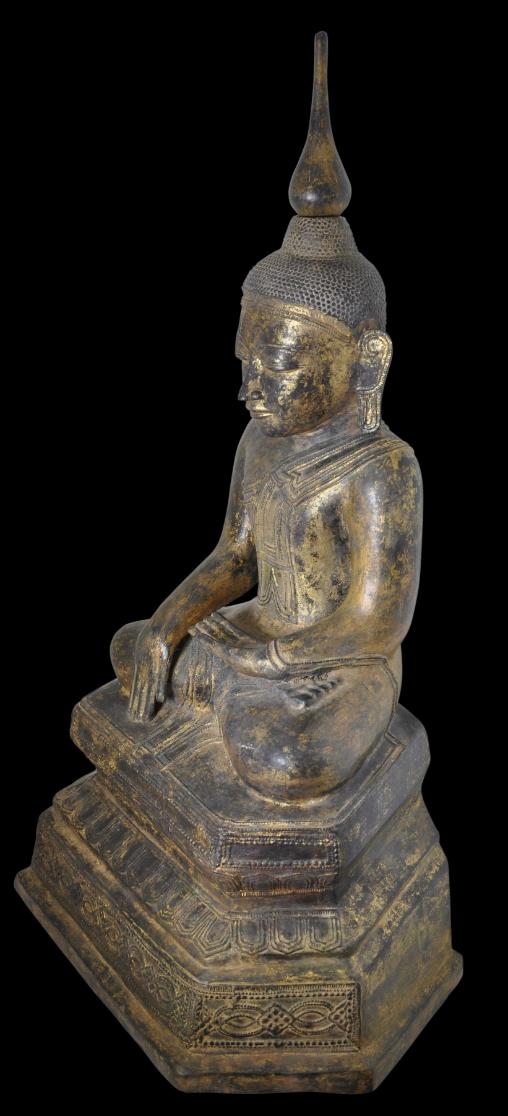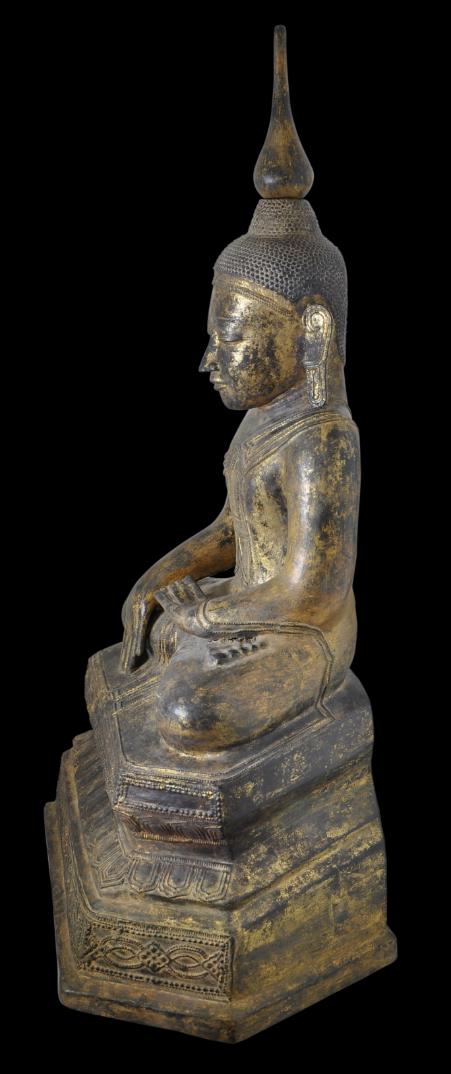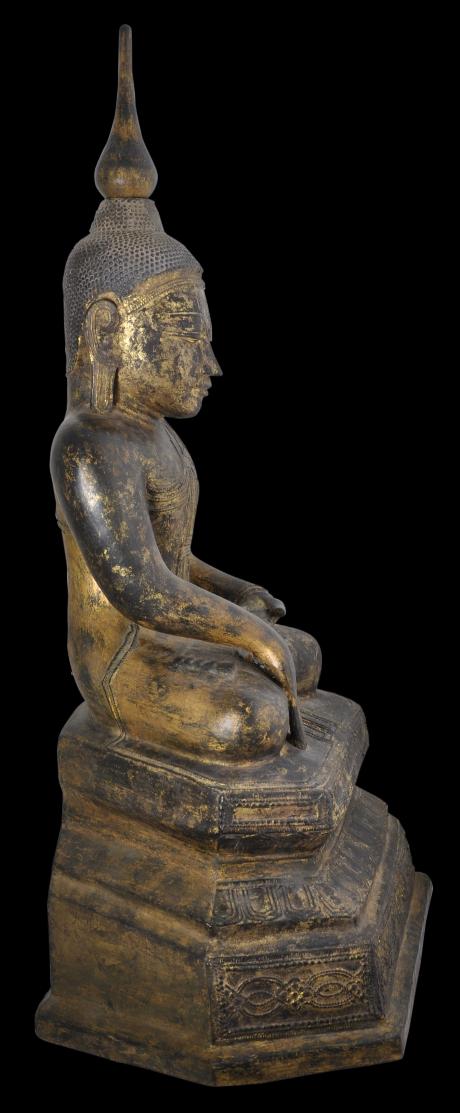
Burmese Lacquer Buddha
Large, Gilded Dry Lacquer Buddha
Burma
late 18th or 19th century
height: 79cm, width: 44cm, depth: 27.4cm, weight: 2,264g
In this fine lacquered and gilded image, the Buddha is dressed in relatively simple monastic robes, defying his princely status. He sits cross-legged on an ornate platform, in bhumisparshamudra – his left hand rests, palm upward, on his lap, and the right hand rests over his right knee, calling the earth to witness. The figure has a pleasing, ‘boyish’ face, the elongated ear lobes of a prince, and a head of small, tight curls.
The image is composed largely of hollow dry lacquer. This means that as large as it is, the image is very light – weighing just over two kilograms – it can be picked up readily by one hand. It is decorated in gold leaf, much of which is now warn from ritual use and age.
The cranial protuberance (
unisha) is made of turned, solid and gilded wood. It inserts into a slot in the top of the head and is removable. It is original and characteristic of this type of Buddha image.
A very similar, though smaller dry lacquer image, is in the Denison Museum, and is also attributed to the 18th or 19th century (see Green, 2008, p. 200.)
According to Isaacs & Blurton (2000), the dry lacquer technique of sculpture production appears to have originated in China. It is not clear when the technique first started to be used in Burma, but by the eighteenth century the technique was well established. It had largely been lost by the mid-twentieth century. The method involves a core image being modelled in clay. This is then covered by a wash of fine ash and water on top of which is applied a putty of lacquer sap and teak sawdust. This is further moulded and shaped, thus providing what will become the completed image. Once the outer mould is dry, the inner clay core is removed and the outer image can be sealed, coated with a refined lacquer mixture, polished and gilded. The end result is a fine but very light sculpture.
This example is in very fine condition, other than an old but stable minor crack to the back of the head (see images). It is to the surface only and is superficial.
References
Green, A., (ed.), Eclectic Collecting: Art from Burma in the Denison Museum, NUS Press, 2008.
Isaacs, R., & T.R. Blurton,
Burma and the Art of Lacquer, River Books, 2000.
Lowry, J.,
Burmese Art, Victoria and Albert Museum, 1974.Provenance:
from a UK private collection and acquired by the previous owner in the UK. The image most probably has been in the UK since colonial times.
Inventory no.: 3465
SOLD









